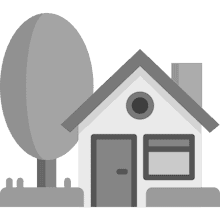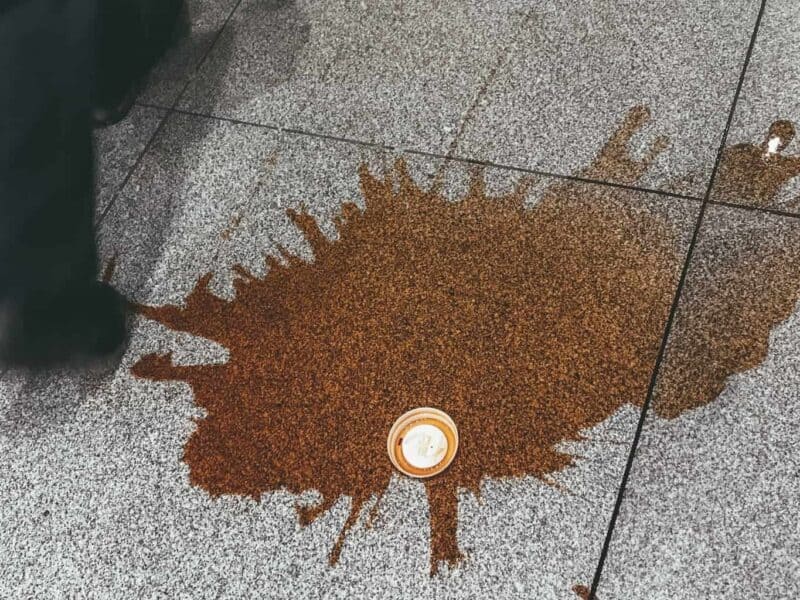
While all floors benefit from regular care and cleaning, many modern flooring options are designed with minimal maintenance in mind.
These include floors such as vinyl, laminate, tile, linoleum and even some carpets.
Conversely, other floor types require additional special care but many feel that their unique look and beauty more than make up for any potential hassle.
Natural Hardwood Floors
For many people, the warmth and beauty of natural hardwood is incomparable and it is certainly one of the few flooring types which will really enhance the value of your home.
If well-maintained, Hardwood Floors will last the lifetime of the building and therefore repays a little extra care with a lifetime of value.
The first step in protecting the value of your hardwood flooring investment is in the prevention of damage and good protection, especially from dirt, sand and grit, the greatest enemies which can act like sandpaper, scratching the finish and causing dents and dulling.
floor mats at doorways and entrances can help to trap dirt and grit and therefore reduce damage. Similarly, avoid dragging heavy furniture across the floor as this can damage the finish and try applying felt contacts under furniture legs to minimise friction.
Any liquid pooling on the floor should be wiped up immediately as it will warp the wood if left unattended.
Remember also that continuous exposure to direct sunlight will fade or discolour the wood, so try to shield the flooring by curtains or blinds or even just sheer drapes, which will offer some measure of protection from UV rays.
Keep up a Regular Cleaning Routine using a fine broom to sweep and/or a vacuum with a special bare floor attachment. Another way to get rid of dirt and dust is to use a dust mop (e.g. 12 to 18 inch cotton head).
Occasionally, you may need to damp mop the floor. (Remember, only do this if the floor’s finish is in good condition as otherwise water will seep into the wood and damage it.) In fact, if your floors are exposed to heavy traffic, you may need to damp mop once a week as this is the fastest and more thorough way to clean your hardwood floors.
Always use a neutral pH wood cleaner and lots of water, never an oil-based soap as this can lead to problems when you want to re-finish the surface or perform other maintenance work on the floor.
Also make sure that you rinse the floor by mopping with clean water and then again after wringing the mop very dry, for a last wipe.
If the finish has been damaged or the floor has lost its lustre, you may want to consider re-finishing the floor. This will often need to be done by a professional for best results. However, an alternative is to wax the floor yourself.
This is a controversial treatment as it can limit refinishing options later but if you are not planning to refinish your floor in the near future, waxing the floor can quickly restore the floor to its natural beauty with minimal fuss and effort.
Note also that if the wood itself is damaged (particularly if the finish has been worn for some time), then you will need to repair or replace sections before reapplying a new finish.
Check the wood for any signs of warping, cracks, gouges, holes, burns and stains before applying a new finish.
Stone Flooring
Natural Stone Floors, especially marble, are often avoided not only because of their high price and installation costs, but also because of the additional maintenance.
Marble, in particular, requires constant cleaning, conditioning and maintenance to preserve its beauty and durability. As it is porous, it will stain easily from spills and is especially sensitive to acids such as citric juices and vinegar.
Even pollutants in the atmosphere can damage or discolour its surface. However, overall, natural stone does not require very much more special care than hardwood flooring.
Again, as with natural timber flooring, the most important thing is preventative care and the biggest enemies are dirt and grit as they will wear the protective finish away over time.
Thus, regular sweeping or dust mopping is advised as well as strategically-placed mats to capture dirt and grit. In addition, it is good to wet mop regularly, using very hot water.
If using a cleaner, choose a neutral stone cleaner or otherwise a non-oil-based, mild dish detergent.
For stone flooring in bathrooms, rinse any areas which are likely to collect soap scum (e.g. sinks, vanities, shower walls) with hot water regularly and remember to wipe dry afterwards.
If the soap scum is particularly difficult to remove, use a bit of ammonia but be very sparing as ammonia will dull the finish over time.
Ideally, you should only resort to using ammonia when hot water and mild, neutral detergent is insufficient. (And remember never to mix ammonia with chlorine bleach as this will release lethal toxic gases.)
For very small scratches and nicks and hard water deposits, you can try scrubbing gently with steel wool but bigger stains and marks will require professional help.
The best preventative measure for stone flooring is the use of a sealant, applied according to the manufacturer’s instructions.
Carpet
While nothing beats carpet for warmth and luxury, keeping it clean and in good condition can be a bit of headache. It is certainly not recommended for high traffic areas and heavy family activity and soiling potential from children and pets.
However, with regular cleaning, quick attention to stains and the occasional deep cleaning every few years, carpet is a worthwhile investment that will last for many years.
Regular vacuuming is the key to keeping carpets clean and in good condition. This prevents surface soil and dirt from becoming embedded in the carpet fibres.
If dirt and grime collect in the fibres, they will abrade and cause the carpet to look dull and dingy. Any stains or spills must be treated immediately, even if the carpet is advertised as being stain-resistant. Blot any liquid spills with white absorbent paper or cloths and never scrub.
Any solids should be removed first by gently scraping with a knife or spoon and then the remaining stain blotted. A stain remover can be used but always spot test first and work from the outside of the stain in towards the centre.
Rinse thoroughly by dampening and blotting with white paper afterwards. Remember to use cold water as heat will set the stain.
Keep blotting with paper until the carpet is dry. If you have wool carpets, make sure you avoid any cleaning solutions which contain bleach or alkali.
Every two to three years, it is advisable to have your carpets professionally cleaned. Several methods can be used, the most common being steam-cleaning and hot water extraction. Others include dry foam extraction and rotary shampoo.
The method chosen is largely dependent on the type of carpet fibre you have. Once thoroughly cleaned, dry the carpets as fast as possible, by natural ventilation and with the help of fans or dehumidifiers if necessary.


